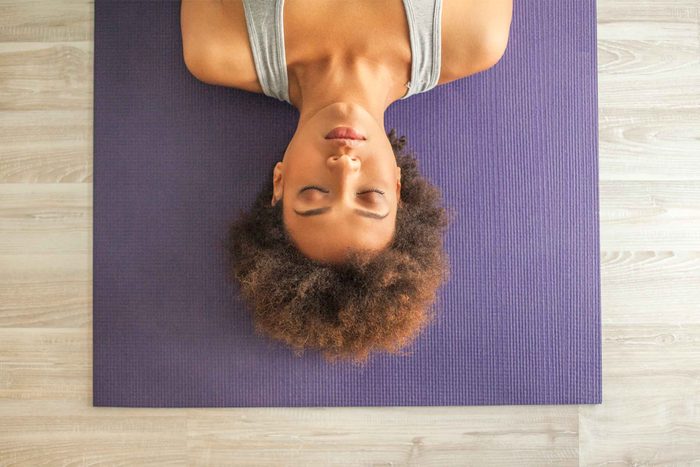
Adopt a relaxation routine
Symptoms of restless legs syndrome (RLS) tend to flare up in the evening, leaving you tossing and turning throughout the night, says Brian Koo, MD, associate professor of neurology at Yale School of Medicine and director of the Yale Center for Restless Legs Syndrome, in New Haven, Connecticut. “We don’t really know why RLS occurs during these periods.” Luckily, though, home remedies for RLS can ease those uncomfortable sensations. (But first see a doctor, who can make a diagnosis rule out other potential issues like kidney and thyroid problems.) Try a relaxation ritual (such as yoga, tai chi, or meditation) before bed. Another calming exercise, called progressive muscle relaxation, has been shown to alleviate pain in older people. Here’s how it works: After you get into bed, take a few minutes to concentrate on deep breathing. Then, tense the muscles in your feet, holding for a few seconds before releasing. Next, tense your calf muscles, hold, and then release. Do the same for your thigh muscles, repeating the pattern as you make your way up your body, and finishing with your neck and face muscles. After completing the exercise, your whole body should be relaxed and ready for a restful night’s sleep.
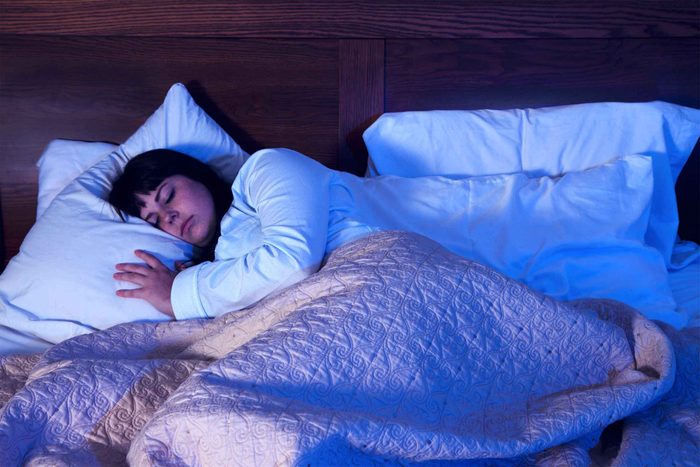
Create a dark and cool environment
“A relaxing sleep environment is crucial to get a good night’s sleep, but that’s particularly so for people with RLS,” says Dr. Koo. Plus, it makes other home remedies for restless legs syndrome even more effective. “A non-relaxing sleep environment may lead to poor sleep and subsequently RLS will get worse, making sleep even more discontinuous.” That means removing digital clocks and other electronics that glow, such as cell phones and laptops. Even if you don’t wake up in the middle of the night, pings from your cellphone or email can sneakily disrupt your sleep cycle. Make sure your shades are tightly drawn against any outdoor lights. And for maximum comfort, the National Sleep Foundation recommends a room temperature between 60 and 67 degrees. (Here are more health conditions that could be messing with your sleep.)
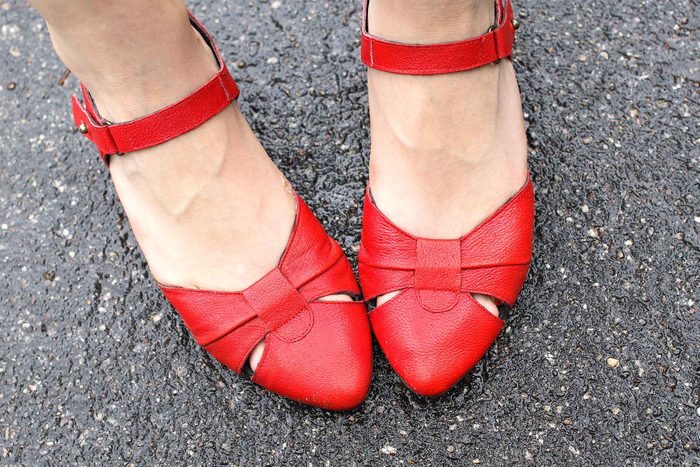
Wear an adjustable foot wrap
In a study published in 2016 in The Journal of the American Osteopathic Association, researchers at the Lake Erie Research Institute in Girard, Pennsylvania created an adjustable foot wrap that puts pressure on the foot muscles known to relax RLS symptoms. When they gave it to RLS patients to wear, they reported an 82 percent decrease in sleep loss, making it almost 1 1/2 times more effective than a standard pharmaceutical treatment. “By putting pressure on specific muscles in the feet, we are able to create a response in the brain that relaxes the muscles activated during RLS,” says Phyllis Kuhn, PhD, the study’s lead author.

Exercise regularly
Everyone needs to stay active for his or her health, but for those suffering from RLS, exercise can be vital to overall comfort. Performing light training daily will alleviate symptoms by releasing built-up tension in your muscles. But beware of exercising too vigorously; overdoing it or working out too late in the day may intensify symptoms.

Avoid caffeine and certain medications
Certain foods (like those that contain caffeine) and medicines (cold and allergy meds that make you sleepy) could trigger restless legs if consumed in excess. Caffeine and sedating medicines stimulate muscles and nerves in your legs, suggests a study published in 2016 in the journal Reactions Weekly. Limiting your intake of these items—or, even better, eliminating them altogether—are home remedies for RLS that could help minimize or prevent symptoms.
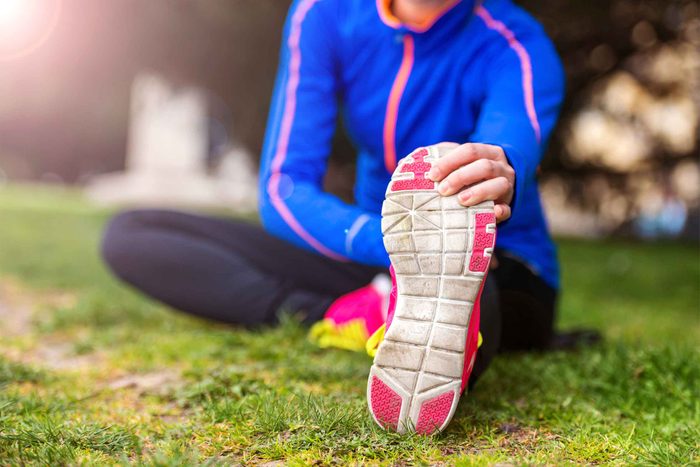
Stretch it out
“In RLS, the urge to move can be relieved by moving around or even by stretching,” says Dr. Koo. “We don’t know exactly why, but it could be related to helping increase blood flow in these areas or simply because moving helps RLS.” When you begin to feel cramping or tingling in your legs after sitting at your desk all day, stretch them to full length and point your toes. If you’re standing when the feeling hits, place your feet shoulder-width apart and bend forward at the hips. But make sure to stop stretching if your leg cramps get worse, and see a doctor; it could be a sign of magnesium deficiency, which requires supplements and can’t be fixed through stretching. Here are some more yoga-inspired stretches to get a good night’s sleep.
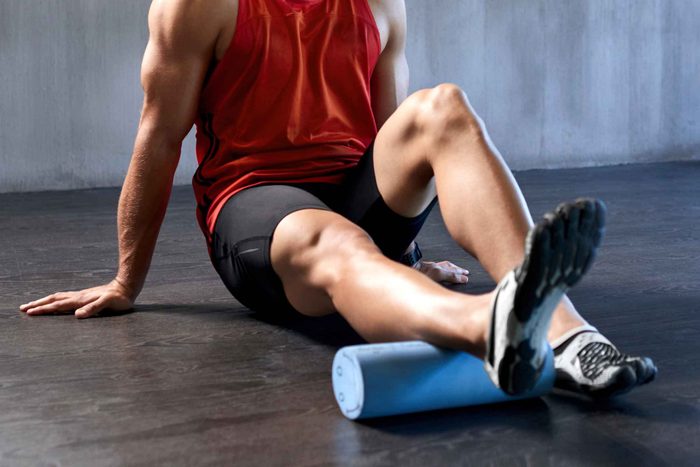
Massage your legs
Give your leg muscles a soothing massage right before you go to bed. Use a tennis ball and roll it over your muscles or pinch and roll your hands along your calves and thighs. Although how long and often you should do this varies depending on your degree of pain, generally it only takes 20 minutes of light, habitual massaging (10 for your hamstrings, 10 for your calves) to ease the pain stored in your legs. If you can’t do it yourself, ask someone else to do it for you or visit a professional massage therapist. Stand up and walk around to release some of the tension if your legs are still cramping after their rubdown. Check out these tips for a soothing self-massage.
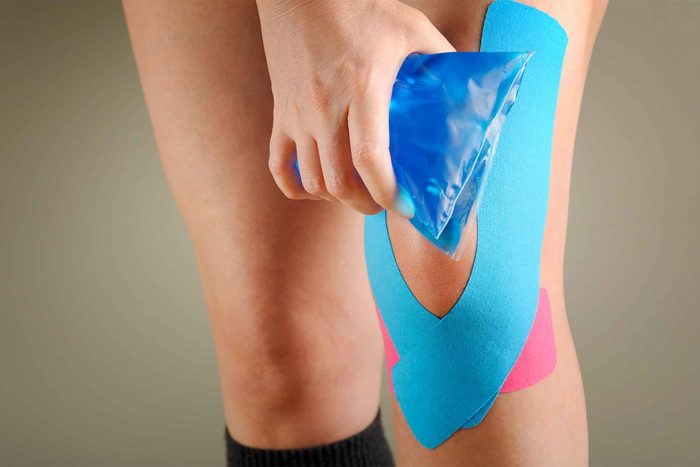
Apply heat and ice
When all else fails, many people have found that placing hot or cold surfaces on their legs can help ease the pain and achiness of muscle cramps. Try alternating between heat and ice packs while reclining on a comfortable chair for easy home remedies for restless leg syndrome. A warm bath or whirlpool will also relax the muscles in your legs.
Every product is independently selected by our editors. If you buy something through our links, we may earn an affiliate commission.
